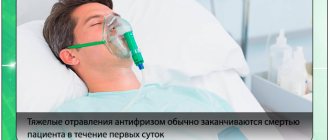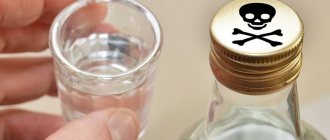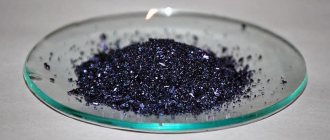The concept of “solvents” is general for a group of organic (hydrocarbons and their derivatives, alcohols, carboxylic acids, esters, amides, ketones, etc.) and inorganic (water, halides, acids, low-melting metals, etc.) compounds that have the ability dissolve various substances.
Source: depositphotos.com
The most popular solvents used both in everyday life and in production:
- ethanol (in the production of household chemicals, in the food, paint and varnish, perfume industries, in medicine, etc.);
- acetone (production of varnishes, explosives, medicines, cleaning of various surfaces);
- turpentine (solvent for varnishes and paints);
- white spirit (dilution of oil paints, alkyd enamels and varnishes, mastics based on bitumen and rubber);
- toluene (used in chemical synthesis, for dissolving polymers);
- ethyl acetate (a solvent for nitrates, cellulose, fats, waxes, mixed with alcohol - a solvent in the production of artificial leather);
- tetrachlorethylene (used in professional dry cleaning of textile materials).
Solvents can be either single- or multi-component, which significantly expands the range of their functionality (for example, “Solvent 648” contains butyl acetate 50%, ethanol 10%, butanol 20%, toluene 20% or “Solvent R-219”, consisting from 34% toluene, 33% cyclohexanone and 33% acetone).
The effects of solvents on the body are toxic in nature, most often noted:
- neurotoxic effect - a harmful effect, often irreversible, on the central or peripheral nervous system and sensory organs;
- hematotoxicity – damage to hematopoietic germs;
- hepatotoxicity – damage to liver tissue;
- nephrotoxicity – damage to kidney tissue.
In addition to toxicity, to assess the danger of solvents to the body, the following are important:
- volatility (evaporation rate, which determines the concentration of vapors in the air);
- the ability to be absorbed through intact skin (depends on the ability to dissolve in fats, the higher it is, the higher the penetrating ability);
- the nature of the transformation in the body, since often the intermediate products of metabolism are more toxic than the solvent itself;
- ability to accumulate in tissues and rate of excretion;
- amount of substance received;
- the initial state of the victim's body.
Types of solvents
Solvents used on production sites and in private homes:
- Ethanol has a wide range of uses. Used in the production of perfumes, household chemicals, paints and varnishes, etc.
- Acetone is necessary when producing varnish and medicines. Cleans and degreases surfaces.
- Turpentine - used when you need to dissolve paints or varnish.
- White spirit is used to reduce the density of oil-based paints, bitumen and rubber mastics, alkyd enamels, and varnishes.
- Toluene - when chemical synthesis occurs, polymers dissolve, this compound is used.
- Ethyl acetate - interacts with fats, waxes, nitrates and cellulose. If you combine it with alcohol, it is useful in the manufacture of artificial leather.
- Tetrachlorethylene - used in specialized enterprises to remove contaminants from textiles using the dry method.
A number of solvents are known, which contain several components:
- Solvent 646 - it contains butyl acetate, ethanol, butanol and toluene.
- Solvent R-219 – filled with toluene, cyclohexanone and acetone.
How they affect the body
All solvents are toxic and harmful to humans. When working, you must follow safety rules and use special protective equipment.
Toxic effects on the human body:
- The central nervous system, peripheral nervous system, and sensory organs are affected. In some cases, the effect is irreversible.
- The structure of the circulatory system is damaged.
- Toxic damage to liver tissue.
- Severe poisoning of kidney cells.
When working with organic solvents, the following should be taken into account:
- The volatility of the incoming components - how quickly they evaporate and how long they remain in the air.
- The ability to penetrate the body through the skin - if the compound is soluble in fats, then it can easily penetrate the body's cells.
- Metabolic process - some compounds are not dangerous to humans, but the products of transformation in the body's cells do more harm.
- How quickly it accumulates in cells.
- At what speed and how is it eliminated from the body?
- Quantity and quality of a chemical compound.
- The physical state of a person interacting with a solvent.
How can you get poisoned?
Poisoning occurs mainly by air. High concentrations of the substance are dangerous during prolonged exposure. If handled carelessly, the solution gets onto an open area of skin. In rare cases, it may enter the body when consumed. Penetration into body tissues accompanies the acute route of poisoning. With constant use of the solvent, chronic intoxication occurs.
Poisoning occurs if:
- Lack of protective equipment for the eyes and respiratory system.
- Failure of a technical process during operation.
- Insufficient ventilation of the room.
- Failure to comply with safety regulations.
- Damage to a container with a substance stored indoors - evaporation of a large amount and concentration in the air.
- Careless ingestion, especially by children.
- Suicide.
Prevention
To prevent solvent poisoning at work, you must:
- work in overalls using personal protective equipment;
- strictly comply with all stages and requirements of the technological process;
- ensure effective ventilation in the room where solvents are used and stored;
- comply with safety requirements in the workplace.
To prevent household poisoning:
- Do not work with solvents in confined spaces without adequate ventilation;
- do not work with solvents without a respirator, gloves, and safety glasses;
- store chemicals out of the reach of children;
- Do not store solvents in unmarked containers near food products.
Signs of poisoning
An overdose of solvent vapors negatively affects the internal state of the body. The respiratory, digestive and nervous systems are affected. Has a depressing effect on the cardiovascular region. Depending on how the toxin entered the organic tissues, the symptom of oppression of that organ predominates.
Symptoms of solvent poisoning:
- Severe headache and dizziness;
- Loss of coordination;
- Hallucinations and delusions;
- Goosebumps and convulsions;
- Speech impairment;
- With a high concentration of toxin - coma;
- Swelling of the oral mucosa;
- Increased blood flow in the pharynx;
- Attacks of nausea and vomiting;
- Burn of the esophagus;
- Cutting pain in the abdomen;
- Strengthening the work of the salivary glands;
- Diarrhea.
If there is a severe burn to the gastrointestinal tract, bleeding may occur during vomiting and in the stool. If the victim is in a coma, pay attention to the odor from the mouth. Each solvent has a characteristic odor. In this way, it will be possible to establish the cause of intoxication.
Symptoms of poisoning with Solvent 646 vapors or ether:
- A rush of blood into the vessels of the eyes - redness of the cornea;
- Pain in the eyes - feeling of sand;
- Profuse lacrimation;
- Dryness and burning in the nasal cavity;
- Strong clear discharge from the nasal cavity;
- Swelling in the nose area;
- Respiratory system problems;
- The voice becomes dull or hoarse;
- Blood pressure drops sharply;
- Cardiopalmus;
- Pressing pain in the region of the heart.
Chronic intoxication
The use of chemical compounds in the domestic sphere leads to acute poisoning. Production of household chemicals, perfumes, etc. uses solvents constantly. Workers inhale vapors daily, and systematic exposure to exposed skin is possible. In this case, chronic poisoning of the body occurs.
Symptoms of occupational intoxication:
- Daily aching pain in the head;
- Irritability and depression;
- Insomnia;
- Constant feeling of fatigue;
- Low concentration, partial memory loss;
- The skin acquires a yellow tint;
- Shortness of breath and rapid heartbeat;
- Changes in blood composition – anemia;
- Kidney diseases.
Symptoms of white spirit poisoning
The hydrocarbon organic solvent is produced from petroleum. In terms of its composition, spiritite is low-toxic. But when drinking, serious damage is caused to the digestive system.
White spirit poisoning is expressed by:
- Pressing pain in the chest;
- Pain in the area of the stomach and pancreas;
- Nausea;
- Vomiting with bloody discharge.
If you drink a large amount of alcohol, a painful shock occurs.
Security measures
To prevent serious consequences from intoxication, preventive measures should be observed.
- Interact in special clothing using the necessary protective equipment.
- Follow safety rules during the technological process.
- Carry out manipulations in specially designated rooms with powerful ventilation.
- Do not violate safety precautions for working with chemicals.
To eliminate household intoxications:
- Carry out work with an open window or outside.
- Work in a respirator, rubber gloves and special goggles (it is acceptable to use ski goggles).
- Keep out of reach of children.
- Never store near food.
The word “solvent” often means a liquid that dissolves a wide variety of substances that are highly resistant to water. These can be rubber and plastic products, paints and varnishes and many others. By their composition, solvents are hydrocarbons and they are very popular both in everyday life and in industry.
Solvent poisoning can be found quite often in children and adults. Therefore, it is very important to know what the symptoms of poisoning with these volatile substances are, how to provide first aid, and what the subsequent treatment will be.
What types of solvents are there?
Each solvent is divided by volatility (or evaporation rate). The higher this indicator, the more likely it is to be poisoned by toxic fumes, even in the case of low toxicity of the solvent itself. Poisoning with organic solvents is dangerous because it has a very negative effect on all mucous membranes (nose, mouth, eyes, etc.), internal organs, and especially on the nervous system, lungs, liver and kidneys.
The volatile liquid ignites easily and releases very toxic gases. Also, in the case of a large accumulation of gases, the substance may explode. The most popular multicomponent organic thinner is considered to be solvent 646. In most cases, it is used for working with varnishes and paints. Poisoning with solvent 646 can have serious consequences, so it must be stored in special closed containers.
Carbon tetrachloride and gasoline are considered the most toxic, so using these substances at home is not recommended. Ether, chloroform and toluene can only be used in rooms with strong ventilation. Acetone and alcohol are considered the safest; cases of poisoning with these substances are very rare.
Symptoms of solvent poisoning.
Most of the solvent enters the lungs in the form of vapor. They can also penetrate the body through the skin, and when they come into contact with mucous membranes, they cause very severe irritation. Therefore, it is important to know every symptom that will indicate solvent poisoning. Let's look at the key symptoms:
- Exposure to solvent vapors causes redness of the eyes, irritation of the internal nasal cavity, severe coughing and sneezing.
- If the solvent gets ingested, the main symptom is severe abdominal pain, which is accompanied by diarrhea, salivation and hematemesis.
- The list of symptoms also includes weakness, headache, dizziness and fainting;
- Poor coordination of movements and the presence of an uncertain gait.
- Cramps.
A few days after solvent poisoning occurs, urination is impaired, jaundice develops, and the liver and kidneys suffer greatly. In addition to these signs, the victim will have constant pain. Bronchitis and pneumonia may develop. Solvent poisoning is a very serious situation and if the victim is not given the correct treatment within three days, death is likely. The degree and complexity of poisoning and treatment time are directly affected by correctly provided first aid.
How to provide first aid in case of solvent poisoning?
A person who exhibits pronounced signs of solvent poisoning should be provided with immediate first aid in the following sequence:
- Provide the person with free access to oxygen;
- If the solvent has been exposed to the skin for a long time, the contaminated area should be washed with warm soapy water.
- It is necessary to induce vomiting to thoroughly lavage the stomach, but if poisoning is caused by petroleum products, this is prohibited.
- You can give a victim of solvent poisoning strong, warm tea with sugar. It is not allowed to give butter or milk; they greatly enhance the absorption of toxic substances.
- Give an absorbent, which must be washed down with plenty of liquid. The most common is activated carbon.
- If the solvent gets into the eyes, then the first aid for such poisoning is rinsing with running water. Then a gauze bandage is applied.
- A person who has lost a creature after severe solvent poisoning should be placed on his back and his head turned to the side.
First aid
Before the ambulance arrives, it is necessary to provide assistance to the victim to alleviate the condition. This way it will be possible to reduce the serious consequences of damage from toxins.
First aid includes response measures:
- Immediately move the victim outside or open the windows.
- If you are suffocating, release tight clothing (unfasten buttons, belt, etc.).
- In an unconscious state, place your head so that it is higher than the body and turned to one side (during a vomiting attack, suffocation will not occur).
- Rinse the affected areas of the body thoroughly with running water (10-20 minutes).
- Eliminate eye discomfort.
- Give mineral water, milk or sweet tea to drink.
What to do if ingested:
- Drink warm water or potassium permanganate solution (1.5 liters) to rinse the stomach.
- Provoke a gag reflex.
- Give a laxative to drink, preferably salt-based.
- Take any sorbent.
Diagnostics
At the first stage, it is important to establish the true cause of the smell. It is necessary to contact a pediatrician so that the doctor examines the child and prescribes additional studies of biological material
The doctor will prescribe tests:
- Urine test for acetone;
- OAM, UAC;
- Test for blood glucose levels;
- Examination of stool to determine worm eggs;
- Blood test for biochemistry;
- Blood test for TSH.
If an endocrine pathology is suspected, an x-ray or ultrasound diagnosis is prescribed, in which the thyroid gland is examined.
Self-diagnosis
It is possible to determine the presence and content of acetone in urine at home. To carry out the procedure, you need to purchase special test strips at the pharmacy. Urine is collected in a container, the strip is lowered into the material according to the instructions. After the specified time, the color of the strip is compared with the indicator on the package. The rich color of the strip means that an excess of ketone bodies has accumulated in the body.
For an objective result, the test must be done in strict accordance with the instructions.
When the causes of the symptom are established, it is necessary to begin treatment. Therapy is not aimed at eliminating the symptom itself, but at eliminating the cause - treating the disease that caused the smell
It is important to provide the child’s body with glucose and remove ketones
Glucose can be replenished by drinking sweet teas, compotes, and honey. Periodically you need to give your child still mineral water.
In a hospital setting, the child is given glucose drips. For pain and spasms, injections of antispasmodics are given. For vomiting, antiemetic drugs are prescribed.
At home, you need to give your child Atoxil. The drug eliminates toxins.
Rehydron - replenishes the water-salt balance. Smecta is a drug that gently coats the walls of the stomach, preventing toxins from entering the patient’s blood.
When the condition stabilizes, the drug Stimol is given. It normalizes metabolic processes in the body.
Normalizes liver functioning - Betargin.
Coma caused by diabetes requires immediate hospitalization. Activities are aimed at quickly reducing the content of ketone bodies and blood sugar.
Traditional methods
Home remedy therapy is aimed at getting rid of the symptom – bad breath. The disease that provoked the symptom should be treated by a doctor. Home Recipes:
- Chamomile tea will help remove the slight smell of acetone from your baby's mouth. It is necessary to use a teaspoon several times a day.
- The strong aroma of chemicals will help eliminate the mint infusion. The leaves of the plant are brewed and infused. During the day, you need to rinse your mouth with the infusion.
- A parent can prepare a delicious and healthy drink for their baby from cranberries or lingonberries. Fruit juice will improve the metabolic process in the body and eliminate odor.
- A decoction of sorrel masks the smell of the solvent. It is necessary to boil the raw materials for 20 minutes.
Folk remedies are attractive due to their naturalness, but are ineffective in treating severe pathologies
You should not focus exclusively on home treatment methods - you can waste precious time and the patient’s condition will worsen
Diet is an important component of treatment. It is contraindicated to force a baby to eat against his wishes. On the first day, it is advisable not to feed the baby, just give him liquid at room temperature. When the growth of ketone bodies stops, offer your baby food. You need to eat often, in small portions
Particular attention should be paid to fluid intake. You should drink frequently, in small sips.
Products allowed:
Exclude from the children's menu:
- Sausages, sausages;
- Citrus;
- High fat dairy products;
- Fried spicy foods;
- Sparkling water.
The diet should be followed for at least two weeks
Products are introduced gradually, with caution
Almost always, the smell of acetone indicates a pathology of organs or a pathological process in the baby’s body. Symptoms may appear completely unexpectedly
It is important not to waste time and urgently consult a doctor. Only a doctor can identify pathology in a child’s body and prescribe the correct treatment.
Treatment
Emergency doctors will assess the severity of intoxication and decide on hospitalization. In case of severe damage to the body, the patient will be taken to the toxicology department in the intensive care unit. A mandatory medical procedure to remove the toxin will be applied. If necessary, you will be connected to a ventilator.
After urgent resuscitation procedures, therapeutic treatment will be prescribed to restore the working functioning of the victim’s body. Each chemical substance has a classification code in the ICD-10 poisoning reference book from T36 to T65.
For poisoning with solvents and xylene, an antidote is used in the hospital. Universal antidotes are glucose, vitamin B6, Unithiol and atropine sulfate.
In children, poisoning is always severe. Qualified medical assistance is required to avoid subsequent complications.











